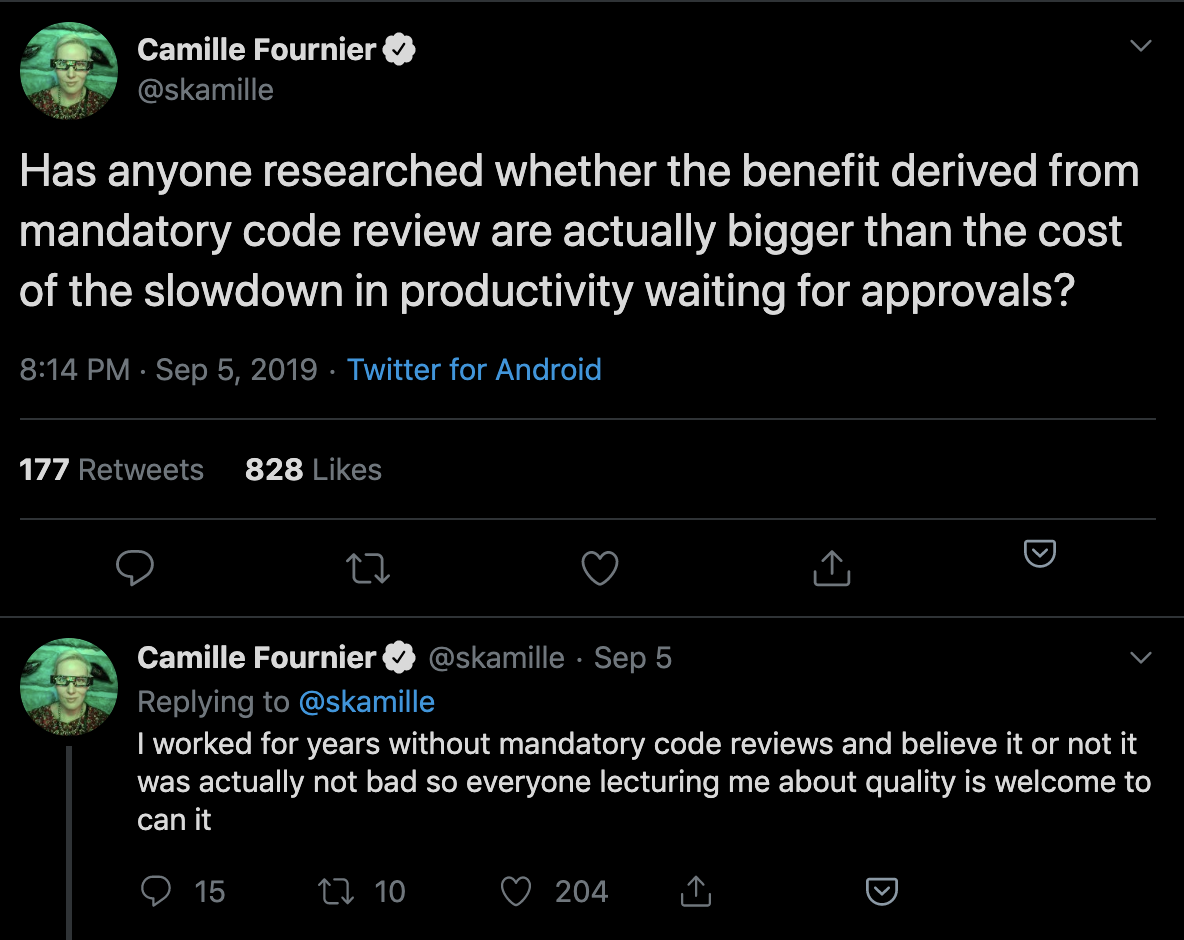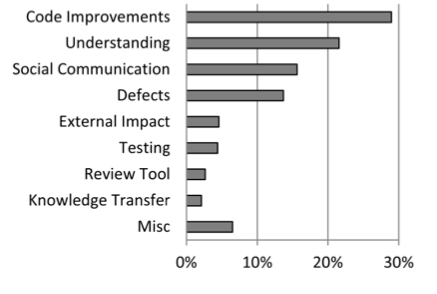Keep Code Review from Wasting Everyone’s Time
This post is the fourth article in our Tactical Guide to a Shorter Cycle Time five-part series. Read the previous post here.
As the engineering industry has moved towards Continuous Delivery, teams have left behind many of the manual quality control measures that once slowed down delivery. Along this same vein, some engineering leaders are doubting whether Code Review still has value:

The annual survey conducted by Coding Bear revealed that 65% of teams are dissatisfied with their Code Review process– yet teams consistently identify Code Review as the best way to ensure code quality. Most people agree Code Review is important, but few know how to prevent it from wasting valuable engineering time.
Before giving up on Code Reviews altogether, we recommend looking at Code Review metrics to identify where you can avoid waste and increase the efficiency of this process.
Defining “Successful” Code Reviews
An effective Code Review process starts with alignment on its objective.
A study at Microsoft a few years ago surveyed over 900 managers and developers to understand the motivation behind Code Reviews. “Finding defects” was the primary motivator of the majority of those surveyed, but when the results were analyzed, the researchers discovered that the outcomes didn’t match the motivations. Improvements to the code were a much more common result of the reviews.

Work with team leaders to determine which outcomes you’re optimizing for:
- Catching bugs and defects
- Improving the maintainability of the codebase
- Keeping consistency of code style
- Knowledge sharing throughout the team
Determining your Code Review priorities helps your team focus on what kind of feedback to leave or look for. Reviews that are intended to familiarize the reviewer with a particular portion of the codebase will look different from reviews that are guiding a new team member towards better overall coding practices.
Once you know what an effective Code Review means for your team, you can start adjusting your Code Review activities to achieve those goals.
Code Review Diagnostics
Historically, there has been no industry standard for Code Review metrics. After speaking with and analyzing work patterns of thousands of engineering teams, we identified the following indicators:
- Review Coverage: the percentage of files changed that elicited at least one comment from the reviewer.
- Review Influence: the percentage of comments that led to some form of action, either in the form of a change to the code or of a reply.
- Review Cycles: the number of back-and-forths between reviewer and submitter.
These metrics were designed to give a balanced representation of the Code Review process, showing thoroughness, effectiveness, and speed. While imperfect (as all metrics are), they provide concrete measures that help you understand the differences between teams and individuals.
Diving into outliers will enable you to finally bring a quality and efficiency standard to Code Reviews across your organization.
Review Coverage
Review Coverage indicates how much attention is spent on reviews and represents review thoroughness. If you’ve identified that the purpose of Code Reviews is to catch defects or improve maintainability, this metric, together with Review Influence, will be a key indicator of how effective this process is.

Low Review Coverage can point you toward incidents of under-review or rubber-stamping. Under-review may be happening as a result of a lack of familiarity with the codebase, disengagement on the part of the reviewer, or poor review distribution.
Unusually high Review Coverage could be an indicator of a nitpicker who’s leading to inefficiency and frustration on the team. This case will likely require realignment on what “good” is.
Review Influence
Any action that is taken as a result of a review comment is proof that the reviewer is taken seriously and their feedback is being considered. When this metric dips low, feedback isn’t resulting in change, indicating that reviews are not perceived to be valuable.

If you consider this metric in tandem with Review Coverage, you may identify cases where individuals or teams leave many comments (have high thoroughness) but those comments yield no action (are low impact). This can signal that there needs to be a re-alignment on the function or purpose of Code Review.
When the Review Influence is low, you’ll want to dive into the reviews that are being left on each Pull Request. When feedback that was intended to be actioned is ignored, it may indicate that the comments were unclear or the suggestion was controversial.
Review Cycles
Each time a Pull Request is passed back and forth, developers are required to context switch and spend more time on one particular line of work.
If this happens frequently, the review process can become a bottleneck to shipment and directly increase your team’s Cycle Time. Even worse, it can serve as a source of demotivation to engineers and contribute to burnout.

Look at your Review Cycle count over time to get a sense of what is typical for your team. Note that a high number of Review Cycles is typical for less experienced team members who are still becoming familiar with your codebase. Otherwise, when Review Cycles spikes, it typically represents some form of misalignment.
The source of that misalignment could be upstream, due to unclear technical direction. It may indicate that there’s a disagreement about how a solution should best be implemented. Or, more simply, team members may not have clarity about what “done” means.
Bring this data into your retros or 1:1s to start the conversation about where this misalignment may have taken place.
When to Revisit Code Review
Of all the components that influence Cycle Time, Code Review is the most difficult to get right. It requires taking a hard look at metrics, but also frequently requires difficult conversations about how to leave constructive yet respectful feedback. Often, the culture of one team is not conducive to processes have worked well for another.
For this reason, we recommend revisiting your Code Review process after any significant change to processes or team structure. This will get easier after you’ve done it once since you’ll have a clear sense of your expectations and the tools with which to communicate them.
To learn where your team should focus next, check out the other articles in our Tactical Guide to a Shorter Cycle Time five-part series:
- Part I: The Virtuous Circle of Software Delivery
- Part II: The Single Greatest Lever in Shortening Cycle Time
- Part III: How to Stop Code Review from Bottlenecking Shipping
- Part IV: Keep Code Review from Being a Waste of Everyone’s Time
- Part V: Moving Toward a Ship-Now Culture